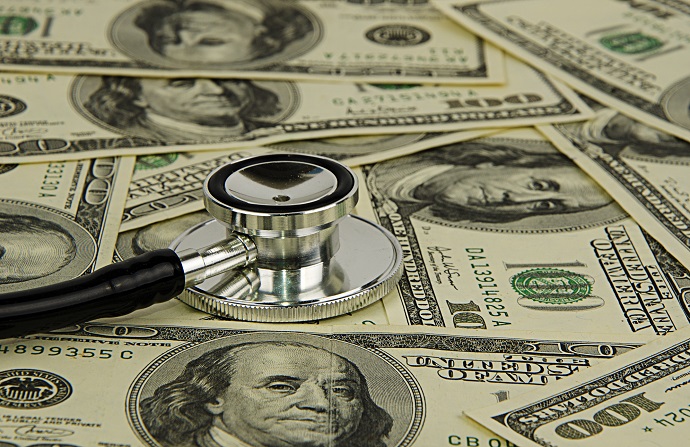Higher Healthcare Utilization, Intensity Drive Healthcare Spending
Healthcare spending has increased over the past decade due to higher utilization rates and intensity of services, AHA found.

Source: Getty Images
- Increased utilization and intensity of healthcare services are the top driving factors of healthcare spending growth, a report from the American Hospital Association (AHA) revealed.
The COVID-19 pandemic has exacerbated these circumstances, as hospitals face staff shortages and increased patient demand.
Healthcare utilization has grown largely due to an increase in the number of people who have health insurance. Uninsurance among nonelderly Americans declined significantly in the past decade, going from 48 million uninsured in 2010 to 30 million in 2020, the report stated. People are more likely to seek healthcare services if they are insured, leading to an increase in utilization.
The aging US population also contributes to high healthcare use, as individuals may require more healthcare services as they get older. More than half of adults live with at least one chronic condition and 27 percent have two or more chronic conditions. The population of individuals over 65 years in the US increased by 60 percent in the last 20 years.
As the number of people with healthcare conditions increases, hospitals must invest in more resources and equipment to meet patient needs, which can be costly. But even with this demand, hospital prices have only increased by an average of 2 percent each year from 2010 to the start of the pandemic in 2020. In contrast, health insurance premiums have grown an average of 4.4 percent in the last decade.
Although hospitals have been able to maintain a mostly steady price range for services, some factors are out of their control.
Drug prices account for 6 percent of inpatient hospital service costs. In the last ten years, drugs purchased directly from hospitals and providers have seen price increases at twice the rate of retail drugs.
Medical equipment and new technology are responsible for 12 percent of hospital care costs. Equipment such as cardiac defibrillators can range from $20,000 to $40,000 and even common prostheses like artificial knees and hips can cost over $5,000.
In order to maintain quality, health systems must keep up with patient demand and emerging technologies, no matter how costly it may be. In 2017, hospitals invested more than $62 million in EHR and other technology systems to facilitate the collection and transfer of patient health information to other providers.
More than half (56 percent) of inpatient hospital costs are devoted to employee wages, salaries, and benefits.
Other services such as professional fees, labor and non-labor intensive services, and utilities account for the remaining 28 percent of hospital care costs.
Hospitals experience significant administrative and cost burden when it comes to coordinating care and prices with payers. Hospitals work with more than 1,000 payers that may have different plan options, distinct requirements, and specific government regulations that health systems must follow, the report noted.
The COVID-19 pandemic caused hospital expenses to increase as health systems experienced declines in patient volumes for non-emergent care but surges in COVID-19 hospitalizations that required complex care.
Hospitals spent $3 billion alone on personal protective equipment for staff members. Additionally, hospitals faced staff shortages due to the pandemic which has cost them around $24 billion. Due to staff shortages, contract temporary labor has also increased by 132 percent for full-time and 131 percent for part-time workers.
According to the report, about 30 percent of healthcare professionals considered leaving their job during the pandemic and 60 percent said pandemic-related stress had a negative impact on their mental health. A past survey by AHA found that a top reason for nursing shortages was emotional health and staff well-being.
The pandemic has left lasting emotional and financial effects on hospitals. Hospitals and health systems are expected to lose at least $54 billion in net income by the end of 2021, AHA stated.
The organization predicted that healthcare spending and utilization will continue to rise in the forthcoming years. Around 10 million individuals deferred cancer screenings in 2020, which will likely lead to higher-level acuity cancer diagnoses.
Drug prices are also expected to increase, incurring higher costs for patients and hospitals alike, AHA concluded.
